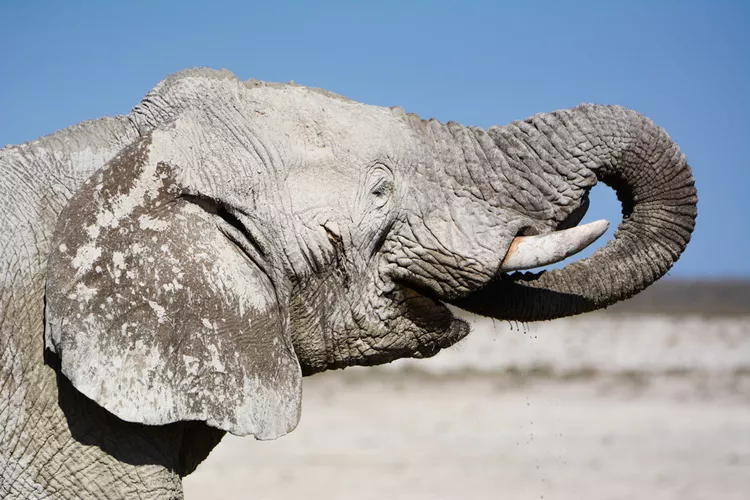1. Summary
This article provides a comprehensive guide to planning the perfect African safari. Learn how to decide what to see, choose your mode of transport, and determine your desired level of independence during your adventure.
Africa is a vast continent, and the possibilities for exploring it are endless. From gorilla-trekking expeditions in Uganda to Big Five game drives in Tanzania, safari experiences are equally diverse. There are many steps to consider when planning your African safari – including deciding what you want to see, how you’d like to travel, and how much you’re willing to spend. In this article, we take a look at a few of the different safari options on offer, so that you can decide which one best suits your personal preferences.
Step 1: Decide What You Want to See
The first step to finding the perfect safari vacation is to think carefully about what you want to see. This will dictate when you travel, and also where you travel. For instance, you’re unlikely to see elephant and rhino if you opt for a camel safari in the Sahara Desert. Similarly, some animals prefer a very specialized habitat and can only be found in a handful of countries. This is true for the critically endangered mountain gorilla, which lives exclusively in the forests of Uganda, Rwanda, and the Democratic Republic of the Congo.
For many first-time safari-goers, ticking off the Big Five is a priority. This term refers to the most iconic large mammals of Southern and East Africa – including lion, leopard, buffalo, rhino, and elephant. Only a few game reserves have sufficient space and the right mix of habitats for all five species to co-exist in harmony. For the highest chance of success, consider your safari at the Maasai Mara National Reserve in Kenya; Kruger National Park in South Africa; or the Serengeti National Park in Tanzania.
If watching predators in action is at the top of your bucket list, try Kgalagadi Transfrontier Park, which spans the border between South Africa and Botswana. East Africa’s annual Great Migration is another good bet, as the vast herds of migrating wildebeest and zebra inevitably attract a pantheon of hungry lions, leopards, cheetahs, and hyenas. Namibia’s Etosha National Park is one of the best places in the world to spot the critically endangered black rhino, while Botswana’s Chobe National Park and Zimbabwe’s Hwange National Park are famous for their enormous elephant herds.
Note: If you’re more interested in birds than mammals, check out this list of Southern Africa’s best birding spots.
Step 2: Decide on Your Mode of Transport
The most traditional mode of safari transport is, of course, an open-sided 4×4 Jeep. However, if you’re looking for a more unique way of getting around, this may become a factor in choosing your destination. Walking safaris are a wonderful way of experiencing the wilderness up close, allowing you to truly immerse yourself in the sights, sounds, and scents of the African bush. Zambia’s South Luangwa National Park is well-known as one of the best options for walking safaris in Southern Africa.
Water safaris, usually conducted in a small boat or canoe, are another memorable option and can be particularly good for bird lovers. During the dry season, birds and animals flock to nearby water sources, providing fantastic viewing opportunities. For river safaris, consider Namibia’s Caprivi Strip or the Chobe River in Botswana. The Okavango Delta also offers canoe safaris, while Lake Kariba in Zimbabwe specializes in houseboat safaris.
Some game reserves also allow exploration on horseback or even on the back of an elephant. For something different, head to North Africa for a camel safari in an arid country like Morocco or Tunisia. While you may not see as much wildlife in the Sahara Desert, the region’s magical dune landscapes and ancient Berber culture more than make up for it. If you’re celebrating a special occasion, a hot air balloon safari is one of the most memorable options available, with the Serengeti being particularly famous for such experiences.
Step 3: Decide on Your Desired Level of Independence
The final decision you need to make is whether you want to travel as part of a group, take a private guided tour, or explore on your own. Each option comes with its own benefits and drawbacks, and it’s essential to choose one that aligns with your preferences.
Group tours involve a planned itinerary with set activities for each day of your trip. You’ll share your vacation with others, which can be a great way to meet new people, or you may find yourself paired with those you don’t particularly enjoy being with. One significant advantage is the cost savings, as shared expenses for gas, accommodation, and activities can lower your overall trip cost. Additionally, traveling with a guide organizes all aspects, including park fees and routes.
Private guided trips are ideal for those who want to leave the logistics to an agency while benefiting from the knowledge of a skilled guide. This option allows for tailoring your itinerary to match your interests without concern for group dynamics. However, private guided safaris tend to be the most expensive option.
On the other end, self-drive safaris provide complete independence at a reduced cost. You can choose where and when to travel. Nevertheless, some parks may not allow self-drive options, and you’ll need to manage all aspects of your trip independently, including accommodations, food, and routes. South Africa, Namibia, and Botswana are considered the best destinations for self-drive safaris.





